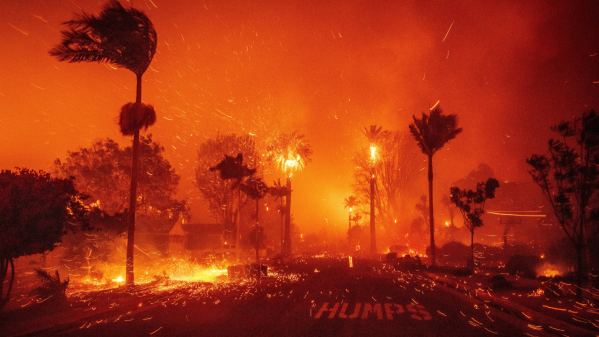
There has been lots of information in the news recently regarding the California Wildfires. However, do you know the facts? Let’s see.
How it began:
Pacific Palisades is a Los Angeles neighborhood, comfortably nestled into the rocky bluff which looms roughly four hundred feet above the Southern California coastline. It’s picturesque, a rival to its well-heeled neighbors, Malibu and Santa Monica. Likewise, Pacific Palisades is a part of greater Los Angeles ─ known by meteorologists as a region, “prone to extreme drought.” Essentially, residents of Pacific Palisades are no stranger to wildfires, especially at this time of year. A quarter after midnight on New Years Day, flames engulfed the hills which surround the community. Luckily, the fire was extinguished in a matter of minutes. But for many Palisades locals, this event is symbolic; a microcosm of the tragedies which would ensue only a week later.
On the morning of January seventh, a brush fire broke out in the same place it had before: atop the hill. Just hours later, at 12:07 PM, citizens would be forced to leave their homes. By this point, acres of farmland and several structures would be consumed by flame and twelve people would be reported dead. Later that day, the Eaton fires would rage along the San Gabriel mountains, roughly 50 miles from Pacific Palisades. The parallel fires were related in that─ the dry conditions proved conducive to their ignitions. Additionally, there is something to be said for another natural phenomenon: the Santa Ana winds. These wind patterns yield gusts of up to one-hundred miles per hour which literally “fanned” the ─ already tall ─ flames, prolonging the process of containment. Ultimately, the Eaton fires would bur an estimated 10,500 structures and cover 14,021 acres.
Effects:
Though the fires mentioned (the Palisades and Eaton) are those attributed to a vast majority of the damage, fifteen smaller fires arose over the course of the month. By the time all fires had been stifled or contained, roughly 40,000 acres of land were left scorched and over 100,000 people had been displaced. This year’s Los Angeles fires are amongst the most destructive in California state history. With all the information we do have, one defining question remains: what caused this disaster? Likely, investigations will go on for months before a definite cause is identified. Some experts reason that the initial fire was an act of arson, while others say that it was related to fallen power lines. Those people experiencing temporary homelessness or who have been left in a state of destitution are hungry for answers; was this an accident or an example of utter negligence?
How to Help:
Right now, the Los Angeles community is most concerned about helping those most directly affected. Red Cross and other like-minded charities have raised funds to provide shelter and food for victims and supplies for those on the front lines of restoration. With the lingering smoke, face masks and gloves are also in high demand. Across the country, we might be wondering what we can do to help. As said, several charities are working hard to support those in need, and it won’t be hard to find one worthy of your trust. Nevertheless, it is always smart to be discriminatory in your financial decisions, donations included, so listed below are trusted charities dedicated to the aid of Angelenos affected by the disaster.
https://www.redcross.org/?srsltid=AfmBOooV5Cm438z76FDh1viOC2rYOAeJxsJDzaJpZH6hbV_KDNucsVo-
